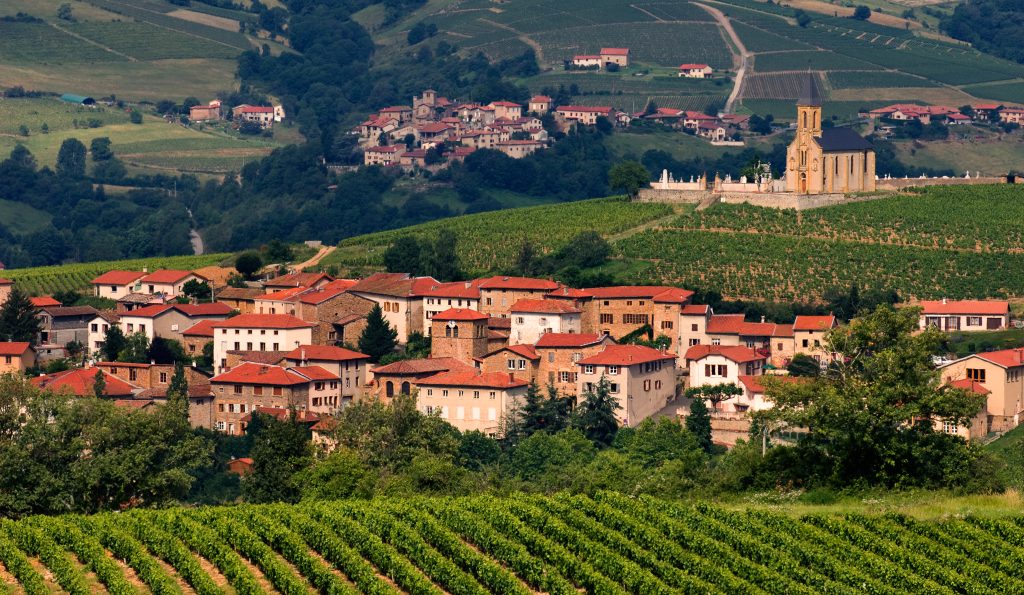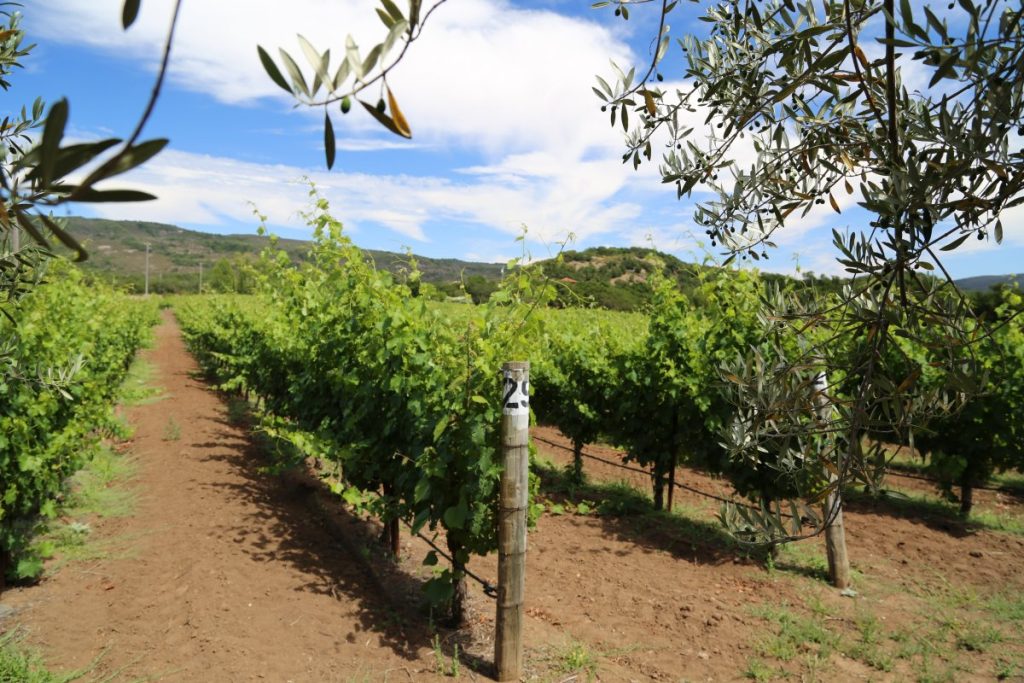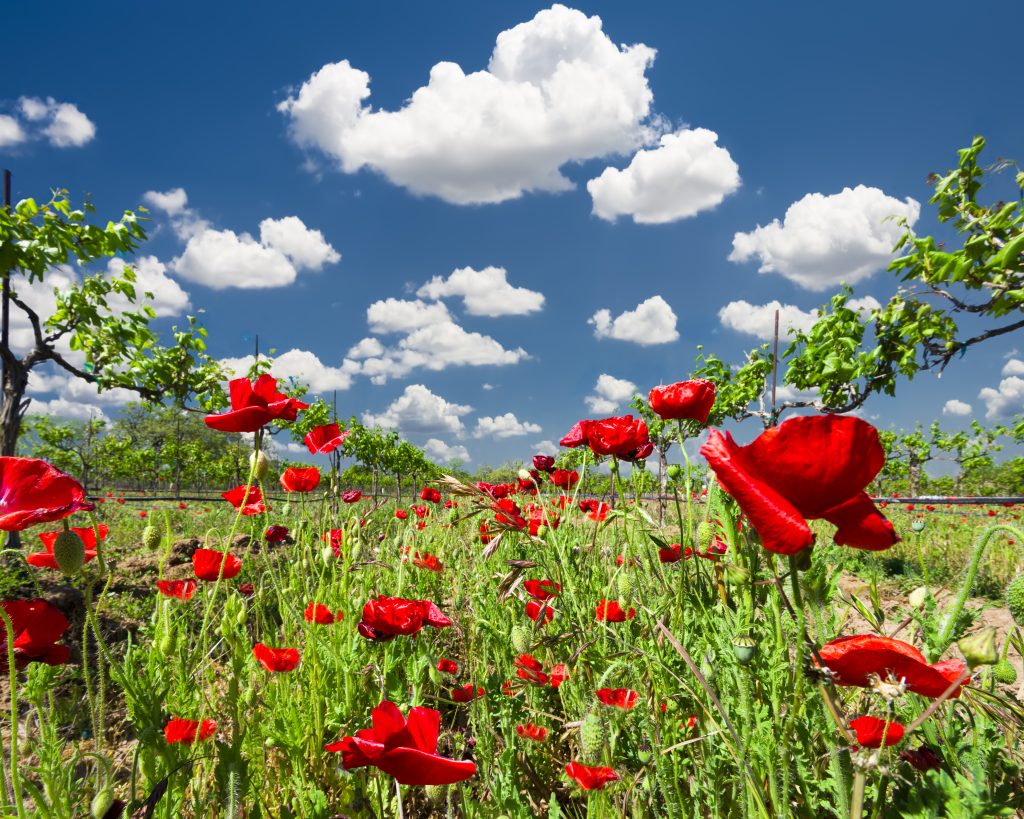Blends Family, Nostalgia, & Passion into Award-Winning Texas Wines

By: Gerald Dlubal
Sometimes stars align in a way that leads you down a particular path. That is certainly the case with the origin of Sandy Road Vineyards, located in the Texas Hill Country near Hye, Texas.
“It all started when Reagan Sivadon married into the family,” said Bryan Chagoly, one of the owners of Sandy Road Vineyards. “Reagan is a winemaker and had previously worked with his childhood friend, Ron Yates, at Spicewood Vineyards in different capacities within the vineyard and cellars, eventually becoming associate winemaker under head winemaker Todd Crowell. The two are responsible for all wine production at Spicewood Vineyards and Ron Yates Wines. Reagan wanted to take a shot at growing grapes for his own wine brand, and we happened to have available land in the Texas Hill Country, so we decided to put it to use and give grape-growing a try. We’ve never looked back since.”
Sandy Road Vineyards is a family-run vineyard located on the site of the Dixon Ranch, named after the grandparents of sisters Adrienne and Kristina. Adrienne and Kristina’s family have owned the land for almost 100 years, purchasing it in the early 1900s. Bryan and Reagan married sisters Adrienne and Kristina, respectively, and now all four are actively involved in running and maintaining the family vineyard.
“The farm was always the gathering place for family dinners and events,” said Chagoly. “It’s where we would all come for get-togethers, and it became a custom to sit on that great farmhouse porch, enjoy a glass of wine and watch the beautiful sunsets that naturally occur in the Texas Hill Country. We absolutely fell in love with the experience and knew this would be an awesome venue to share with others. Visitors will definitely see and experience a piece of our family history while enjoying our new chapter as vineyard owners and winemakers.”
“The farm literally sits at the end of a sandy road, a name given to the road by the locals that once lived in the small town of Sandy,” said Chagoly. “It’s just how the locals all came to know the road, and it’s still a sandy road to this day. As kids, our wives would turn down “Sandy Road” to go to the farm. Now, driving down the road reignites those special memories and feelings, making this place more than just a family property. So as the old farmhouse comes into view, it’s a feeling of nostalgia, reliving the farm experiences and passing on some of those same great feelings and memories to future generations.”
Location, Location, Location
Chagoly told The Grapevine Magazine that the old farm property was used for growing cotton in the 1920s until the Great Depression, when people were forced to move west to find work. Sandy Road Vineyard is about four miles from the Pedernales River in the Texas Hill Country and features a unique blend of soils, including chalky limestone, iron-rich clay and primary riverbed sand, allowing the owners to play around and experiment with a variety of terroirs.
“We took numerous four-to-five-foot depth samples at various places on the farm to determine where a vineyard might perform best,” said Chagoly. “Interestingly enough, we found an eastwardly sloped area that provided excellent drainage and was comprised of three distinct layers of soil, each offering unique properties and growing conditions for different varietals of grapes. Chalky limestone covered the top, over a middle of iron-rich clay laying on riverbed sand. We could plant a variety of grapes in this one area and match the depth of planting to the type of soil that offered each particular varietal the best chance for success.”
“Our vision, then, was to plant unique varietals across the 16-acre plot,” said Chargoly. “We wanted to feature wine grapes that would thrive in the unique soil makeup and also handle our climate and the hot Texas sun to ultimately produce delicious wines. While researching these variables, we found that our hill country soil and climate closely resembled the southern Mediterranean. So, why not grow grapes that would love these conditions? That led us to choose Spanish, Italian and French red varietals.”
“Our tempranillo, mencia, and prieto picudo are Spanish-inspired, with a plan to try a traditional Spanish blend in the future,” said Chargoly. “Our French varietals (southern Rhone Region) feature a grenache, Syrah, Mourvèdre and a marselan, a cross between a cabernet sauvignon and a grenache. Marselan is pretty rare around here and was first attempted as a way to grow cabernet sauvignon grapes in warmer climates due to global warming concerns. So far, it seems to like our Hill Country climate and soil attributes. And our Italian varietal is a great sangiovese. We also offer white wine selections, sourcing Texas high plains fruits for production from our neighbors within the state. Additionally, we just planted reisen varietals for a neighbor, so we’re anxious to see how that goes.”
Unforgettable Sunsets, Tastings, & Food Pairings
Visitors to Sandy Road Vineyards will be guided by signs pointing them to the vineyard, where they will see the old farmhouse and the vineyards at the back of the property. Chagoly said that once visitors arrive, there is a pavilion on the premises that offers an indoor-outdoor casual area for tasting, hanging out with friends or just relaxing and enjoying the serene experience and views of the farm and vineyard. No reservations are necessary, but they are accepted for those that are planning to visit and want to ensure seating. The shaded pavilion has fans and a cool breeze in the summer and is enclosed with heaters and a fire in the winter to maintain a warm and cozy atmosphere for experiencing the wines, farm and vineyard. A standard wine tasting will last approximately one hour and include a tasting of five of Sandy Road Vineyard’s 100 percent Texas wines. After the tasting, visitors are welcome to stay and enjoy the vineyard for the rest of the day if they choose to do so.
For an enhanced tasting experience, the vineyard offers a popular “treehouse venue” available only by reservation.
“We realized that we needed a place for consumers to taste and purchase our wine once we made it, and we wanted to provide that in a creative and fun way,” said Chagoly. “We ended up taking an old mobile home on the farm and stripping it down to its 60-foot metal trailer frame. Then, we transformed it into a fun treehouse venue that overlooks the awesome views of the farm and vineyard.”
The enhanced experience is a creative adventure based on the belief that everyone deserves to slow down, relax and enjoy a great-tasting glass of wine with their friends. The treehouse overlooks the vineyard and farm and offers a private, seated, outdoor tasting event with the owners of Sandy Road Vineyards. During the tasting, visitors can expect to learn about the owners, the vineyard’s unique terroir, how it benefits the grapes they choose to grow here and the wines they produce.
“We want to create a deeply meaningful wine-tasting experience that has the potential to become a special lifelong memory,” said Chagoly. “The peaceful scenery, the table overlooking the vineyard and the heartfelt stories from the owners who personally farm and produce their own wine brand are all presented within the unique experience of being outside, in a tree, with the sun on your face and the wind in your hair, overlooking the very vineyard that produced the wines that you are tasting. It will leave you wanting to experience more.”
The treehouse venue tastings feature food and wine pairings presented in an educational format that not only shares insights into Sandy Road Vineyard wines but also teaches the visitors about Texas wines in general. After your wine tasting, visitors are free to stroll through the vineyard to explore the challenging terroir of the rocky hillside to see what it takes to grow award-winning wine in the Texas Hill Country. The wine-tasting experience
at Sandy Road Vineyards is an exclusively outdoor experience within the vineyard. Chagoly says visitors should plan for a fantastic nature-based experience with the sun, wind, dirt, rocks and all the Texas outdoors offers.
Successful Winemaking Is a Blend of Several Businesses
“It’s truly been a family affair,” said Chagoly. “Both families are involved in running the winery and vineyards from start to finish, and if there’s one piece of advice I can give to aspiring vineyard owners and winemakers, it would be to seek experience regarding any help or needed advice, because you end up running three separate businesses. In our case, we are growing grapes, making wine,and then marketing and selling our wine all from this one location. At its core, winemaking is a manufacturing and production process demanding a perfect blend of scientific principles and art. Selling the wine is crucial, especially for a new winery like ours. We have to be able to effectively market our wines and get folks out here to try and hopefully buy what we’ve produced. And finally, the actual farming, which is the hardest by far, especially trying to figure out what Mother Nature will bring us here in Texas. The farming aspect can be especially challenging.”
Sustainable Practices, Personal Attention & Precision Care Produce Award-Winning Wines
The owners of Sandy Road Vineyard believe that the best fertilizer is the farmer’s own shadow, and the best wines are produced in small batches in a sustainable environment, with the individual attention and respect of the winemaker. This means being constantly and consistently in the vineyard, working and harvesting the vines and grapes by-hand to create a wine with perfect balance. They will not put that wine on the market until they find that balance. Therefore, everything is hand-grown, hand-pruned and hand-harvested to produce the highest quality Texas wine for their consumers.
On a related note, Chargoly has started a website to promote the best in Texas wines. Top Texas Wines features inclusive lists and descriptions of the best 100 percent Texas wines, making it easy for visitors to locate the best of the best in Texas winemaking. At a minimum, each wine listed on the site will be Texas designated, produced by a Texas winery and won a gold medal in blind judging at an international wine competition. Entries include the awards won and the prices per bottle, should you decide to purchase the wine online directly from the producing Texas winery. Chargoly says that every Texas wine on his site is exceptional and worth tasting.
“Our mission is to bring the highest quality farming and winemaking to Texas wines and to continuously raise your expectations for fine Texas wine.”
For more information about Sandy Road Vineyards, their award-winning wines, other Texas Hill Country wines or to make a reservation contact…
Sandy Road Vineyards
383 Vineyard Row
Johnson City, Texas 78636
Phone: (512) 589-1826
Website: www.sandyroadvineyards.com











